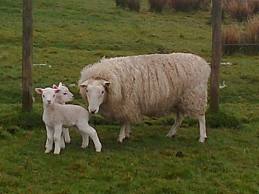Grass staggers occurs when there are low levels of blood magnesium. Staggers results from an inadequate absorption of magnesium from the digestive system. There is very little magnesium reserves in the animals skeletal structure, and thus, a daily intake is required.
The condition typically occurs on a cold/wet day when animals do not consume as much grass as normal. The disorder can be chronic in cattle that have been fed a poor quality winter feed, and in outwintered animals.
Magnesium deprivation continues to cause significant losses amongst lactating sheep and cattle. Mag disorders occur primarily when stock are turned onto lush pastures in spring and autumn because of poor absorption of mag from both potassium (K)-rich pasture and Mg supplement.
In sheep, two-fold improvements in magnesium absorption should be attainable on many farms by delaying, restricting or redistributing K applications in fertilizers and slurries. Cattle are more vulnerable than sheep to Mg-disorders because they absorb Mg far less efficiently from fresh or conserved pasture even when K is low. For sheep and cattle, the target should be spring pasture with no more than 2.5% K in the dry matter. For sheep and cattle, earlier but gradual introduction of spring grazing reduces the challenge from K.



